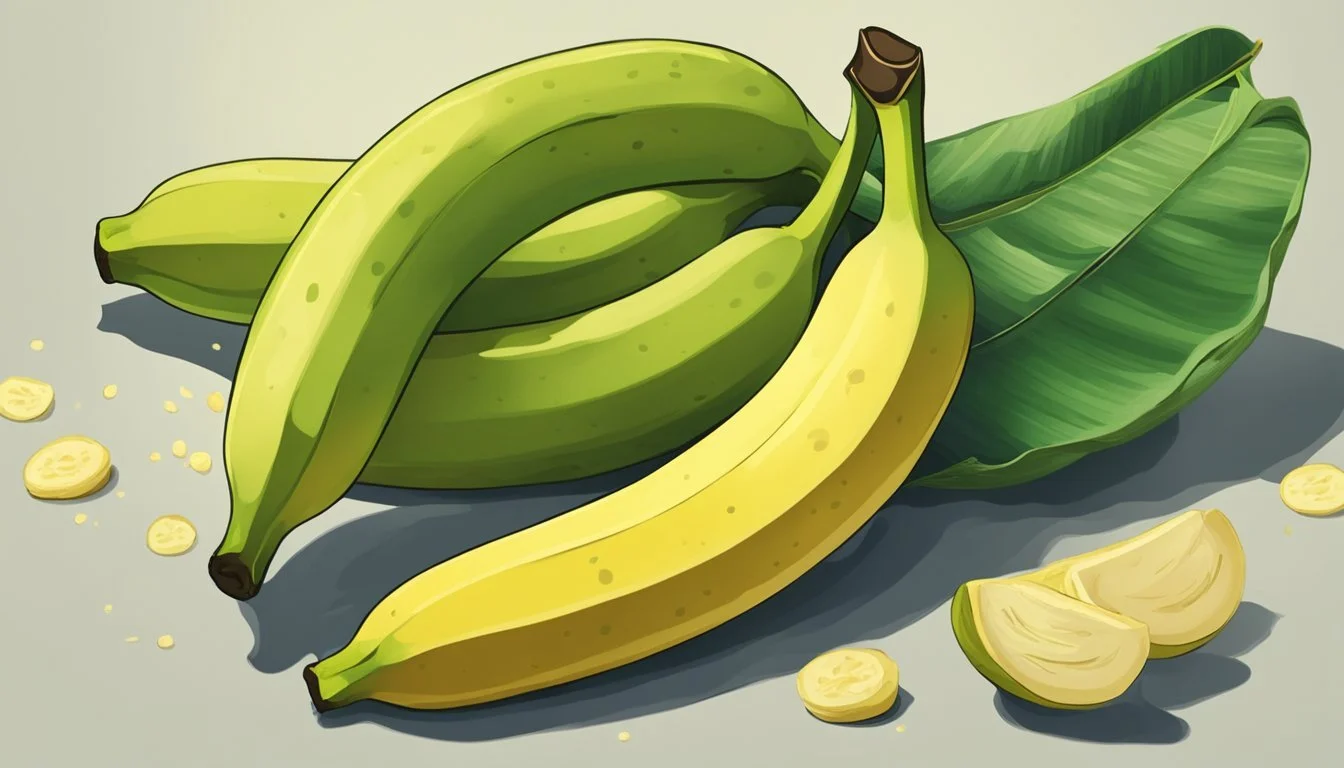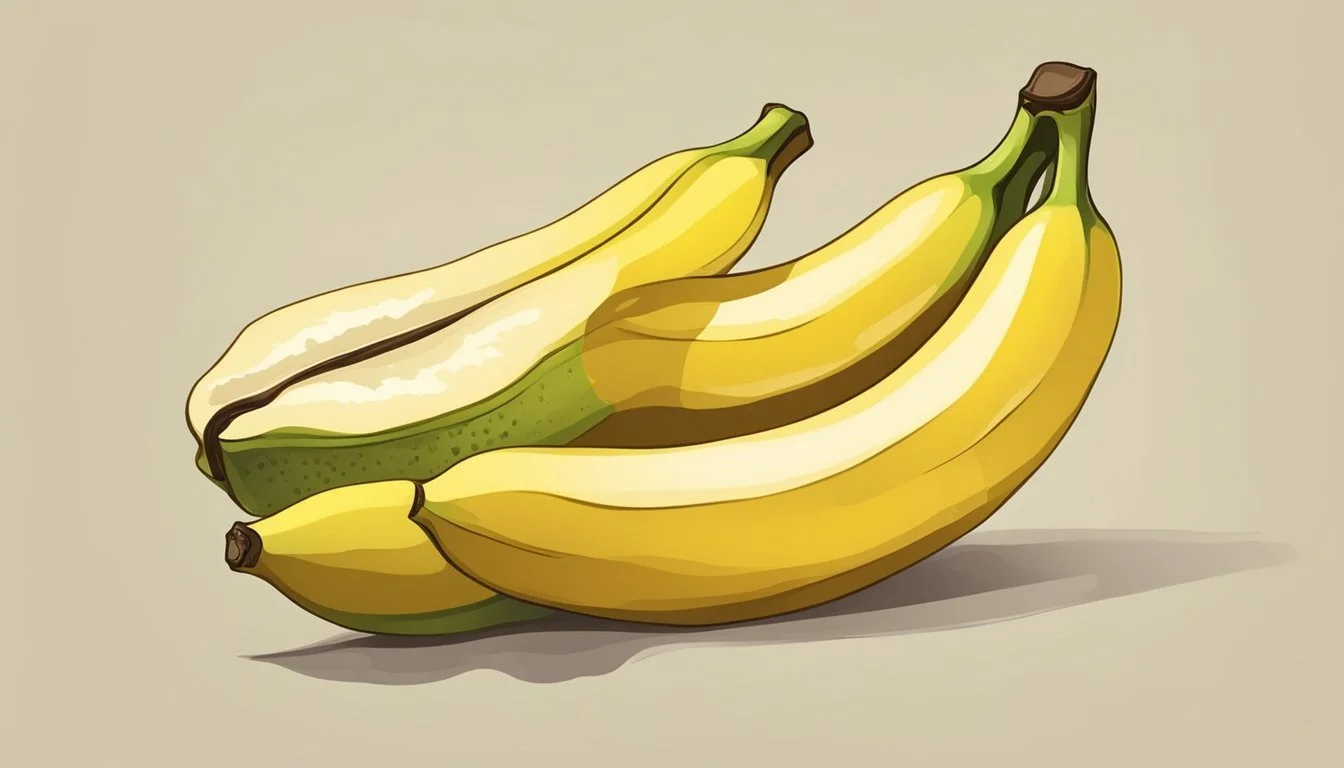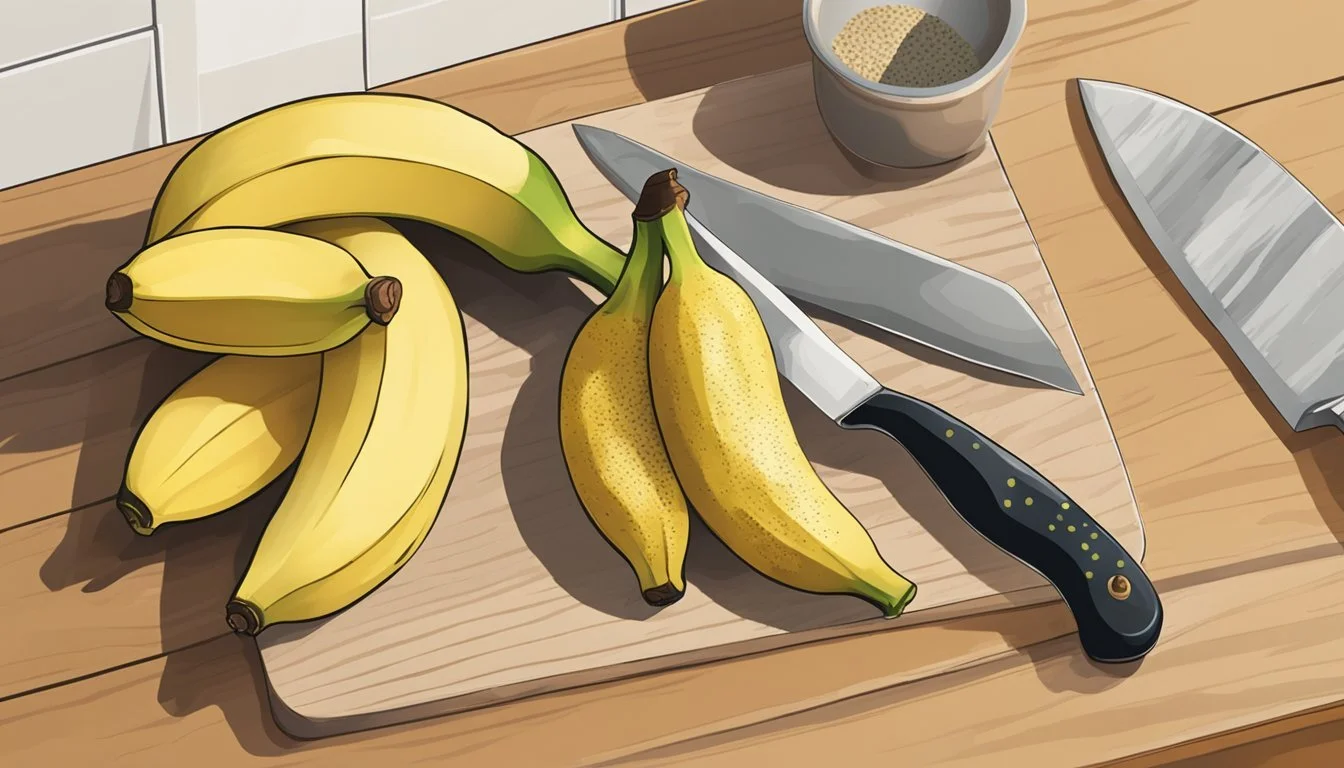How to Tell if a Cavendish Banana is Ripe
Identifying Peak Sweetness
Determining the ripeness of a Cavendish banana is a simple yet pivotal skill for consumers wanting to enjoy the fruit at its best. The Cavendish banana, the most widely consumed banana variety, offers both nutritional benefits and culinary versatility. Recognizing the perfect point of ripeness ensures a satisfying experience, whether the banana is eaten by itself or used as an ingredient in a variety of recipes. Various indicators signal the ripeness of a Cavendish banana, including skin color, texture, and aroma.
Ripe Cavendish bananas are characterized by their bright yellow skin, which can display small brown speckles indicating peak sweetness. At this stage, the fruit is soft to the touch but still retains firmness. The absence of green at the tips suggests that the banana has reached full ripeness, while a prominent sweet scent is another hallmark of a perfectly ripe banana. Understanding how to discern these signs not only influences the quality of one's diet but also helps minimize food waste by preventing premature consumption and overripeness.
Key Takeaways
A ripe Cavendish banana displays a yellow skin with brown spots and a sweet aroma.
Texture informs ripeness; a ripe banana is soft yet firm and not overly mushy.
Recognizing ripeness before purchase can enhance culinary uses and reduce waste.
Understanding Banana Ripeness
Determining the ripeness of a Cavendish banana is essential for enjoying its optimal flavor and texture. One should consider the banana's stage of ripeness, color, and texture to ensure they have achieved peak ripeness.
Stages of Ripeness
Bananas undergo several stages as they transition from unripe to overripe. These stages include:
Green Stage: At this initial stage, bananas are considered unripe. They exhibit a firm texture and contain higher amounts of starch.
Yellow Stage: As they ripen, bananas turn yellow. They become sweeter due to the conversion of starches into sugars.
Spotted Stage: When yellow bananas develop brown spots, it indicates a further progression in ripeness with increased sweetness.
Brown Stage: Overripe bananas are characterized by a brown, soft skin and a very sweet, almost fermented flavor.
Visual Indicators
The color of a banana is a reliable indicator of its ripeness:
Green Bananas: Indicate that the banana is not yet ripe. It may taste starchy and less sweet.
Yellow Banana: A fully yellow banana without brown spots signifies optimal ripeness with a balance of sweetness and firmness.
Brown Spots: Small brown spots on a yellow banana are signs of heightened ripeness, indicating that the fruit is sweeter and softer.
Overall Color: The banana’s peel should be free of any significant green hues to ascertain ripeness.
Textural Clues
The texture of a banana provides insight into its ripeness:
Firmness: A ripe banana maintains a degree of firmness but will yield slightly to gentle pressure.
Softness: If the banana feels mushy, it may be overripe.
Yielding: The ideal ripe banana should be firm yet yield slightly under pressure, indicating it is ready to eat.
By correctly identifying these attributes, one can confidently determine the perfect stage to enjoy a Cavendish banana.
Determining the Perfect Ripeness for Use
The ripeness of a banana influences both its flavor and texture, making it critical to choose the right stage for your intended use.
Ripe Bananas for Immediate Consumption
Ripe bananas display a bright yellow color with small brown freckles and should feel firm but yield slightly to pressure. The flavor at this stage is sweet and creamy, ideal for eating out of hand. They are also excellent for smoothies or on top of cereals, where the full flavor can be appreciated.
Color: Bright yellow with tiny brown spots
Texture: Firm, yet slightly yielding
Flavor: Sweet and creamy
Overripe Bananas for Baking
When bananas develop a darker color, becoming more brown than yellow, and feel very soft to the touch, they are overripe. At this stage, they may not be visually appealing for raw consumption, but they are perfect for baking. The heightened sweetness and softness make them ideal for banana bread and muffins, where they contribute moisture and richness.
Color: More brown than yellow
Texture: Very soft
Flavor: Sweet, intense banana flavor
Green Bananas for Future Use
Green bananas are underripe, with a firmer texture and starchy flavor. These bananas are not yet suitable for consumption or most recipes as they continue to ripen after being picked. Storing them at room temperature will allow them to ripen gradually. If one needs to speed up the ripening process, placing them in a brown paper bag can help.
Color: Solid green
Texture: Firm and starchy
Flavor: Mild, not sweet
Scientific Basis of Ripening
Assessing ripeness in Cavendish bananas is a precise science that hinges on understanding the ripening process and its impact on sugar content and sweetness. The transformation from an unripe green fruit to a sweet, yellow banana involves complex biochemical changes regulated by ethylene gas and reflected in the fluctuating sugar levels.
Ethylene Gas and Ripening
Ethylene gas is a natural plant hormone that plays a pivotal role in the ripening of Cavendish bananas. It acts as a trigger that initiates a series of enzymatic reactions, leading to the softening of fruit, color change from green to yellow, and development of the characteristic banana aroma. The production of ethylene gas in bananas increases significantly during ripening. This gas not only affects the fruit it is produced in but can also accelerate ripening in nearby fruits, which is why bananas ripen quickly in a bunch.
Key facts on ethylene and banana ripening:
Ethylene gas acts as a ripening agent.
The presence of ethylene increases enzymatic activity responsible for ripening.
Ethylene-induced reactions result in skin color change and fruit softening.
Sugar Content and Sweetness
Ripeness in bananas is heavily linked to the conversion of starches to sugars, particularly glucose and fructose. As the banana ripens, enzymes like amylase break down the starch present in the green fruit, resulting in an increase in sugar content and sweetness. The sweet taste of a fully ripened Cavendish banana is a direct result of this increase in sugar concentration, which also contributes to the overall palatable texture of the fruit.
Important points on sugar content during ripening:
The starch-to-sugar conversion is enzymatic.
Increase in glucose and fructose correlates with perceived sweetness.
Measurement of sugar levels can be an indicator of ripeness.
Storage and Preservation Tips
When it comes to Cavendish bananas, understanding the distinct storage techniques for unripe and ripe fruit is essential. It ensures that they maintain their quality for as long as possible.
How to Store Unripe and Ripe Bananas
Unripe Bananas:
Room Temperature: Store them at room temperature until they ripen.
Separate Them: If they are in a bunch, separate them to slow down the ripening process.
Ripe Bananas:
Refrigerate: Place ripe bananas in the refrigerator; the skin may darken but the fruit inside remains unchanged.
Brown Paper Bag: If quick ripening is needed, store bananas in a brown paper bag to concentrate the ethylene gas they emit.
Extending Freshness
To keep bananas fresh longer, the following practices can be employed:
Avoid Contact with Surfaces: Hanging bananas or keeping them on a banana stand prevents bruising and promotes even ripening.
Ethylene Producers: Store bananas away from other ethylene-producing fruits to prevent them from ripening too quickly.
Health Considerations
When assessing the ripeness of Cavendish bananas, one must consider not just taste and texture but also the health impact. The nutritional content shifts as the banana matures, affecting both the benefits and concerns related to its consumption.
Nutritional Information
As bananas ripen, their nutritional makeup also changes. Here is a snapshot of the typical nutritional content for a medium-sized Cavendish banana:
Calories: 105
Carbohydrates: 27 grams
Sugars: (varies with ripeness)
Fiber: 3 grams
Protein: 1 gram
Fat: 0.3 grams
This fruit offers essential vitamins and minerals including:
Vitamin B6
Vitamin C
Potassium: Around 422 mg
Ripe bananas tend to have higher levels of antioxidants when compared to their less mature counterparts.
Dietary Benefits and Concerns
Benefits:
A ripe Cavendish banana provides an excellent source of fiber, which is beneficial for the digestive system.
The high potassium content aids in maintaining healthy blood pressure and heart function.
Vitamin B6 in bananas is vital for brain health and creating neurotransmitters such as serotonin and dopamine.
Concerns:
As bananas ripen, the starches convert to sugars, increasing the carbohydrate content which can impact blood sugar control.
Overripe bananas may not be suitable for individuals with diabetes due to higher sugar levels.
Those on a low-carb diet might prefer bananas that are slightly underripe, which contain less sugar and more resistant starch.
Selecting a banana at the right stage of ripeness can deliver nutritional benefits while aligning with one's specific health and dietary concerns.
Creative Uses in Recipes
Cavendish bananas are versatile fruits that can transform various dishes with their sweetness and texture. When ripe, their natural sugars and softness make them perfect for both baked goods and health-conscious treats.
Banana-Based Baked Goods
When baking, ripe Cavendish bananas add moistness and a rich, sweet flavor to a variety of recipes. Here are two classic applications:
Banana Bread: A staple in many homes, banana bread benefits from the sweetness and texture of ripe bananas. To craft a classic loaf, one would mash the bananas and combine them with flour, sugar, eggs, butter, and baking powder.
Muffins: For a portable snack, one can incorporate mashed bananas into muffin batter, combining them with ingredients like whole wheat flour and nuts, yielding a tender, nutritious treat. For a vegan option, substitute eggs and dairy with plant-based alternatives such as apple sauce or dairy-free milk.
Healthy Smoothies and Snacks
Ripe bananas are a key ingredient in preparing nutritious smoothies and snacks:
Banana Smoothie: Blend ripe bananas with ingredients such as Greek yogurt, honey, and a choice of milk to create a creamy banana smoothie. For added nutrition, throw in a handful of spinach or kale.
Vegan Snacks: Bananas can act as a binding and sweetening agent in vegan snacks. They are superb in recipes like banana oat bars or date and nut balls, providing the needed moisture and sweetness without animal products.
Practical Tips and Tricks
In determining the ripeness of Cavendish bananas, one should assess specific indicators such as color, firmness, and aroma. The nuances of these attributes can inform selections that ensure the perfect timing for enjoyment or utilization in various culinary applications.
Speeding Up the Ripening Process
To hasten the ripening of Cavendish bananas, individuals can employ a few trusted methods. Ethylene gas, naturally emitted by bananas, can be utilized to speed up this process.
Enclose in a Paper Bag: Placing bananas in a paper bag concentrates the ethylene gas around them. Adding an apple or a ripe tomato to the bag can amplify the effect, as these fruits release additional ethylene.
Use of a Microwave: For immediate use, a microwave can be employed. Prick the banana skin with a fork, and microwave it for approximately 30 seconds. This method will not increase sugar content but can soften the fruit.
Checking for Peak Ripeness
Identifying the optimal stage for consumption or baking involves monitoring specific ripeness cues.
Skin Coloration: A ripe Cavendish banana will exhibit a bright yellow skin with small brown speckles. A completely brown or black banana indicates over-ripeness, where the sugar content is high and the structure is very soft.
Firmness and Aroma: A ripe banana should be firm but yield slightly under pressure, indicating peak ripeness. Additionally, it will emit a sweet and fruity smell, a reliable indicator of a pleasant sugar concentration for eating.
Choosing Bananas at the Grocery Store
When selecting Cavendish bananas, the most prevalent variety at grocery stores, shoppers should look for a bright yellow color as a primary indicator of ripeness. Bananas with a consistent yellow hue are typically at the peak of their ripeness. Green bananas, however, are not ripe yet and will require time to mature at home.
Firmness is another essential factor to consider. A ripe yellow banana should yield slightly under pressure, indicating it is ready to eat. Avoid bananas that feel overly soft or mushy as they may be bruised or overripe. Conversely, bananas that are very hard indicate that they are not ripe enough for immediate consumption.
Shoppers should also inspect for bruising. Small brown spots can be normal as bananas ripen but large discolored areas suggest the fruit has been mishandled and may have significant bruising below the surface.
In summary, one can use visual and tactile cues to select ripe Cavendish bananas at the grocery store. Below is a brief guide:
Color: Opt for evenly yellow bananas. Green indicates under-ripe, dark spots may signal overripe.
Texture: Feel for a banana that is firm yet has a slight give.
Brusing: Check for bruises. Small speckles are okay; large dark areas are not ideal.
By following these guidelines, consumers can confidently choose ripe Cavendish bananas for immediate consumption.






